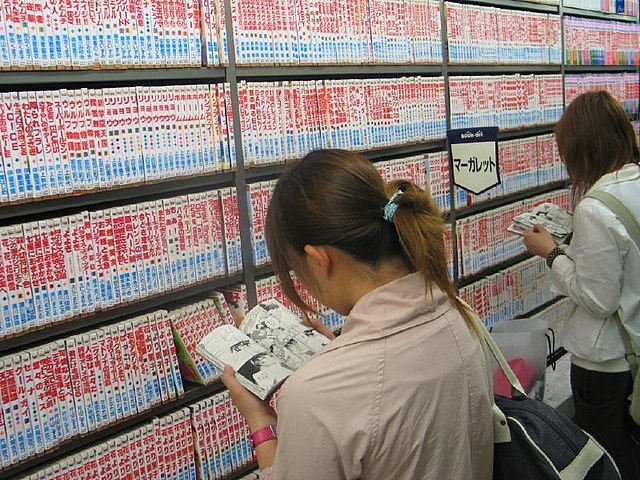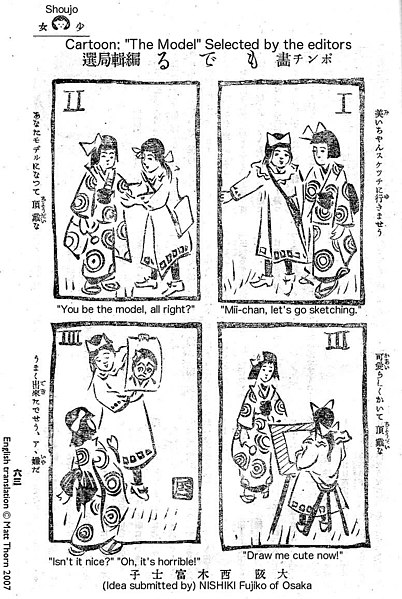Kazuo Umezu or Kazuo Umezz is a Japanese manga artist, musician and actor. Starting his career in the 1950s, he is among the most famous artists of horror manga and has been vital for its development, considered the "god of horror manga". In 1960s shōjo manga like Reptilia, he broke the industry's conventions by combining the aesthetics of the commercial manga industry with gruesome visual imagery inspired by Japanese folktales, which created a boom of horror manga and influenced manga artists of following generations. He created successful manga series such as The Drifting Classroom, Makoto-chan and My Name Is Shingo, until he retired from drawing manga in the mid 1990s. He is also a public figure in Japan, known for wearing red-and-white-striped shirts and doing his signature "Gwash" hand gesture.
Kazuo Umezu, 2010
Shōjo manga is an editorial category of Japanese comics targeting an audience of adolescent females and young adult women. It is, along with shōnen manga, seinen manga, and josei manga, one of the primary editorial categories of manga. Shōjo manga is traditionally published in dedicated manga magazines, which often specialize in a particular readership age range or narrative genre.
Shelves of collected volumes of shōjo manga under the Margaret Comics imprint at a bookstore in Tokyo in 2004
Actress Hideko Takamine, portraying an archetypal shōjo wearing a sailor fuku in the 1939 film Hana Tsumi Nikki [ja]
Cover of the first issue of Shōjo-kai, 1902
A four-panel manga from the November 1910 issue of Shōjo (artist unknown). Note the henohenomoheji in the final panel.



![Actress Hideko Takamine, portraying an archetypal shōjo wearing a sailor fuku in the 1939 film Hana Tsumi Nikki [ja]](https://upload.wikimedia.org/wikipedia/commons/thumb/6/6a/Hideko_Takamine_in_Hana_tsumi_nikki%2C_1939_%28cropped%29.jpg/488px-Hideko_Takamine_in_Hana_tsumi_nikki%2C_1939_%28cropped%29.jpg)

